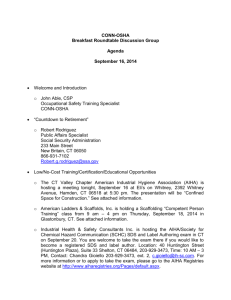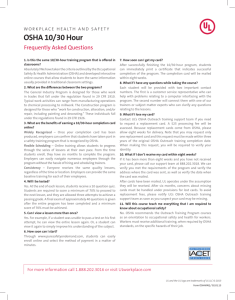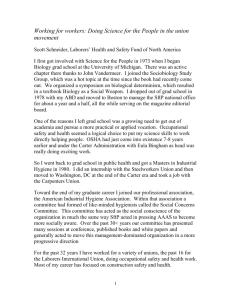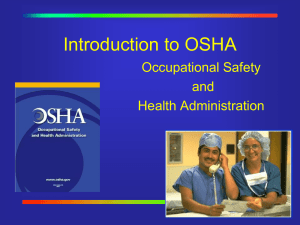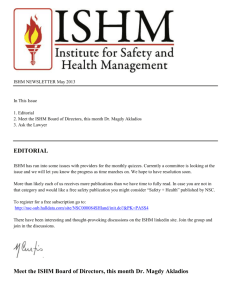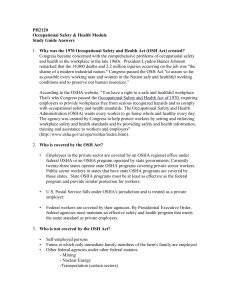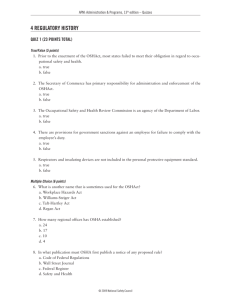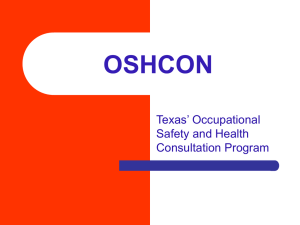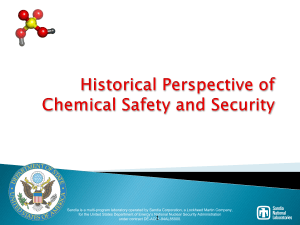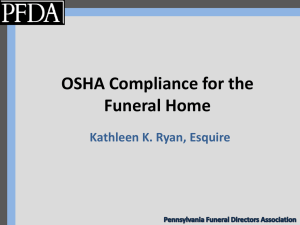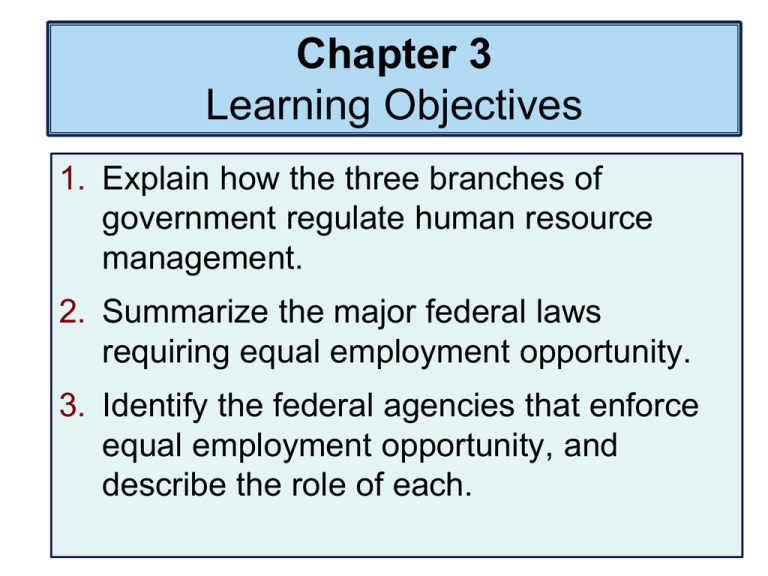
Chapter 3
Learning Objectives
1. Explain how the three branches of
government regulate human resource
management.
2. Summarize the major federal laws
requiring equal employment opportunity.
3. Identify the federal agencies that enforce
equal employment opportunity, and
describe the role of each.
Chapter 3
Learning Objectives
(continued)
4. Describe ways employers can avoid illegal
discrimination and provide reasonable
accommodation.
5. Define sexual harassment and tell how
employers can eliminate or minimize it.
6. Explain employer’s duties under the
Occupational Safety and Health Act.
Chapter 3
Learning Objectives
(continued)
7. Describe the role of the Occupational
Safety and Health Administration (OSHA).
8. Discuss ways employers promote worker
safety and health.
Regulation of Human Resource
Management
Major Fair Employment Laws
• Equal Pay Act (1963)
• Civil Rights Act (1964)
• Age Discrimination in Employment Act
(1967)
• Americans with Disabilities Act (1990)
• Civil Rights Act (1991)
Government Regulation of EEO
Age Discrimination Complaints,
1994 - 2009
Genetic Information Nondiscrimination
Act of 2008 (GINA)
• Employers may not use genetic information in
making decision related to the terms, conditions,
or privileges of employment
• Includes a person’s genetic tests, genetic test of
the person’s family members, and family medial
histories
• Forbids unintentional collection of this data
• Forbids harassment of employee because of
genetic information
Exemptions From
Antidiscrimination Regulations
• Bona Fide Occupational Qualification
(BFOQ)
– Suitable defense against a discrimination
charge only where age, religion, sex, or
national origin is an actual qualification for
performing the job.
• Business Necessity
– Work-related practice that is necessary to the
safe and efficient operation of an
organization.
Fair Employment Executive Orders
and Enforcement Agencies
•
•
•
•
Executive Order 11246 (1965)
Executive Order 11478 (1969)
EEOC
OFCCP
Types of Charges Filed with the EEOC
Businesses’ Role in Providing for EEO:
Avoiding Discrimination
Disparate Treatment
• Differing treatment of
individuals based on the
individuals’ race, color,
religion, sex, national
origin, age, or disability
status.
Disparate Impact
• A condition in which
employment practices are
seemingly neutral yet
disproportionately
exclude a protected
group from employment
opportunities.
Applying the Four-Fifths Rule
Supreme Court Decisions on
Fair Treatment
• Griggs v. Duke Power (1971) – Job related
issues
• University of California Regents v. Bakke
(1978) – Reverse Discrimination
• Meritor Savings Bank v. Vinson (1986) –
redefining sexual harassment
Sexual Harassment
• Definition
Workplace Safety: Occupational Safety
and Health Act (OSHA)
• Authorizes the federal government to
establish and enforce occupational safety
and health standards for all places of
employment engaging in interstate
commerce.
• Established the Occupational Safety and
Health Administration (OSHA). Responsible
for:
– Inspecting employers
– Applying safety and health standards
– Levying fines for violation
OSHA Jurisdiction
• 10 Districts
(Eastern districts are smaller as compared
to the Western districts)
• At least one field office in each state
Enforcement of the OSHA
• OSHA is responsible
for inspecting
businesses, applying
safety and health
standards, and
levying fines for
violations.
• OSHA regulations
prohibit notifying
employers of
inspections in
advance.
Workplace Safety: Occupational Safety
and Health Act (OSHA)
General Duty Clause
• Each employer has a
general duty to furnish
each employee a place of
employment free from
recognized hazards that
cause or are likely to
cause death or serious
physical harm.
Specific Duties
• Employers must keep
records of work-related
injuries and illnesses.
• Employers must post and
annual summary of these
records from February 1
to April 30 in the following
year.
Rates of Occupational Injuries and Illnesses
Top 10 Causes of Workplace Injuries
OSHA Inspections
•
•
•
•
OSHA review of employer records
Walkaround/inspection tour
Employee interviews
OSHA recommendation
or citations
CREATING A
HEALTHY WORK
ENVIRONMENT
Health Services
Health-Improvement
First aid
Physical fitness
Medical diagnosis and
programs
treatment
Health bonuses
Physical exams
Wellness programs
Employee Assistance
Help employees
Programs
manage stress
Personal crises
Emotional problems
Alcoholism and drug abuse

